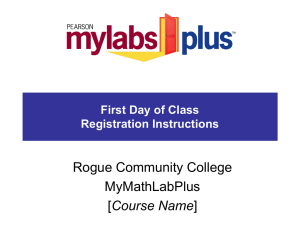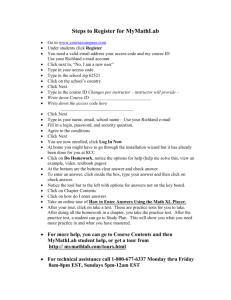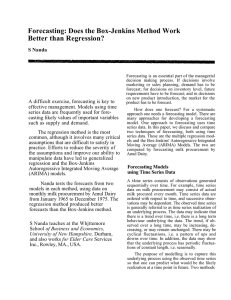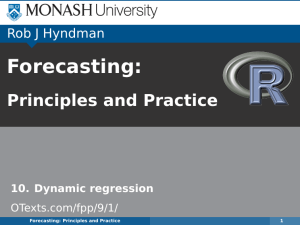Applied Statistics
advertisement
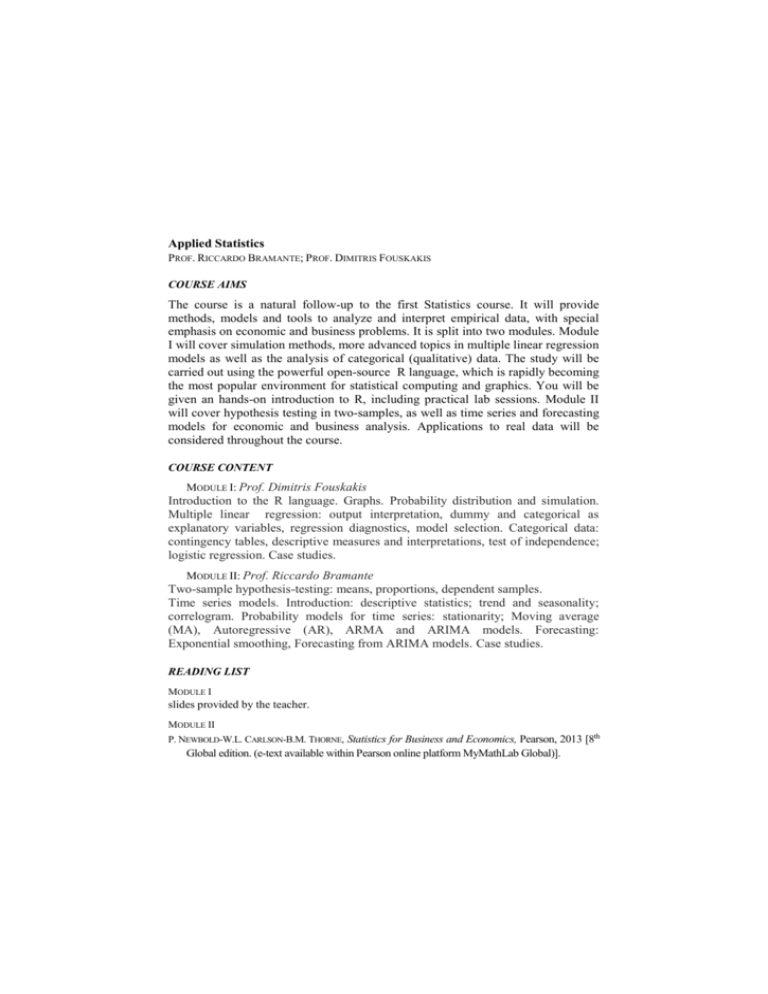
Applied Statistics PROF. RICCARDO BRAMANTE; PROF. DIMITRIS FOUSKAKIS COURSE AIMS The course is a natural follow-up to the first Statistics course. It will provide methods, models and tools to analyze and interpret empirical data, with special emphasis on economic and business problems. It is split into two modules. Module I will cover simulation methods, more advanced topics in multiple linear regression models as well as the analysis of categorical (qualitative) data. The study will be carried out using the powerful open-source R language, which is rapidly becoming the most popular environment for statistical computing and graphics. You will be given an hands-on introduction to R, including practical lab sessions. Module II will cover hypothesis testing in two-samples, as well as time series and forecasting models for economic and business analysis. Applications to real data will be considered throughout the course. COURSE CONTENT MODULE I: Prof. Dimitris Fouskakis Introduction to the R language. Graphs. Probability distribution and simulation. Multiple linear regression: output interpretation, dummy and categorical as explanatory variables, regression diagnostics, model selection. Categorical data: contingency tables, descriptive measures and interpretations, test of independence; logistic regression. Case studies. MODULE II: Prof. Riccardo Bramante Two-sample hypothesis-testing: means, proportions, dependent samples. Time series models. Introduction: descriptive statistics; trend and seasonality; correlogram. Probability models for time series: stationarity; Moving average (MA), Autoregressive (AR), ARMA and ARIMA models. Forecasting: Exponential smoothing, Forecasting from ARIMA models. Case studies. READING LIST MODULE I slides provided by the teacher. MODULE II P. NEWBOLD-W.L. CARLSON-B.M. THORNE, Statistics for Business and Economics, Pearson, 2013 [8th Global edition. (e-text available within Pearson online platform MyMathLab Global)]. Each student is required to purchase access to MyMathLab Global, which contains the e-text of the textbook, and a variety of student resources.. TEACHING METHOD The whole course involves lectures and PC-labs, and requires active participation, ongoing personal study and self-evaluation through the Pearson online platform MyMathLab Global. ASSESSMENT METHOD Exams will be managed exclusively in the PC lab, through the online platform MyMathLab Global as well as Blackboard. There will be a first partial exam in the middle of the term. The second partial exam will take place together with the first general exam



